The Leading Edge: October 2023 Wind Energy Newsletter
In this issue, NREL celebrates wind energy accomplishments from Fiscal Year 2023, publishes offshore estimates in Nature Energy, receives $1 million for bat deterrent research—and shares the latest news, opportunities, and publications.
Upwind: Featured News
That’s a Wrap! Celebrating NREL’s Fiscal Year 2023 Wind Energy Accomplishments
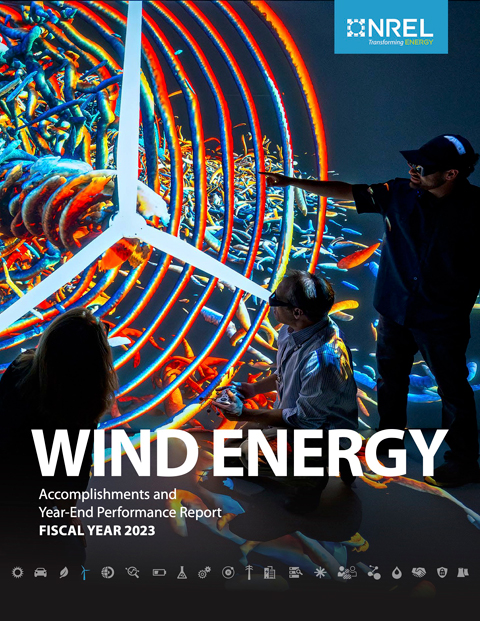
This past year, NREL celebrated several landmark anniversaries for wind research facilities and programs. NREL’s Flatirons Campus, home of the National Wind Technology Center, celebrated 30 years as a world-class hub for renewable energy research. An important component of NREL’s Flatirons Campus, the 7-MW Controllable Grid Interface wind energy research apparatus turned 10 this year. NREL helped complete the 10th annual Collegiate Wind Competition in May 2023. And 6 years after they were first compiled, NREL brought together more than 100 wind energy experts from 15 countries to revisit the field’s most pressing research needs at a topical expert meeting on the grand challenges in wind energy science.
NREL’s wind energy research portfolio continues to build momentum in its efforts to combat climate change, create clean energy jobs, and promote energy justice. Check out NREL’s Fiscal Year 2023 Wind Energy Accomplishments and Year-End Performance Report to learn more about the impactful wind energy research performed by NREL researchers in Fiscal Year 2023.
Offshore Wind Energy Could Serve up to 20% of Regional Power Needs Along the Atlantic Coast by 2050
Offshore wind could generate as much as 8% of the nation’s electricity by 2050, according to a Nature Energy article coauthored by NREL researchers Philipp Beiter, Trieu Mai, and Matt Mowers. But that deployment could range widely (30–250 GW), depending on how a variety of factors related to the power system evolve over the coming decades. The authors deployed a capacity expansion model and found that high levels of offshore wind energy deployment are most likely in scenarios where there is a combination of stringent decarbonization policies, low technology costs, fewer siting options for land-based renewables, and limited interregional transmission. For example, the study’s core scenario considers strict zoning regulations for land-based wind turbines and solar panels that expand offshore wind’s market potential.
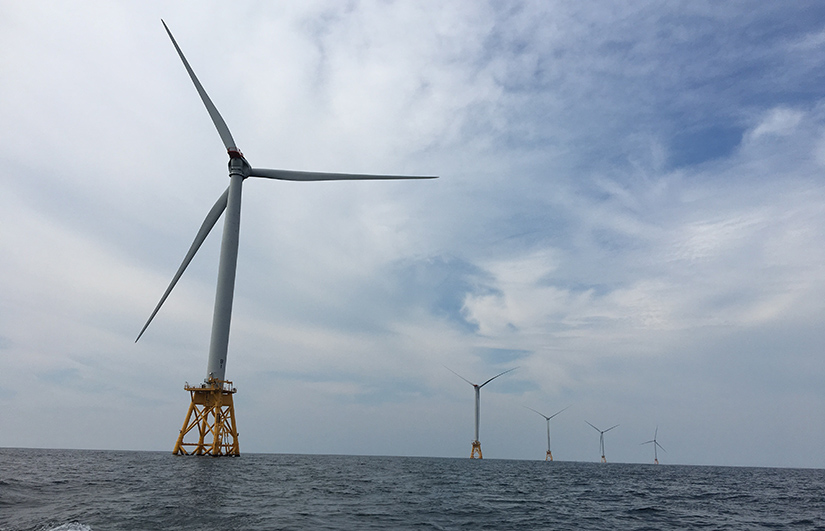
Behind the Blades
Keeping Projects Running
In celebration of the end of Fiscal Year 2023, we caught up with the person behind the coordination of NREL’s growing wind energy research portfolio. Read what Kendra Ryan, the wind program integrator, shared about her background, her role here at NREL, and what she’s most excited for in Fiscal Year 2024.
What did you do before you came to NREL, and what got you interested in wind energy?
Prior to NREL, I was in the U.S. Navy for 21 years and ultimately retired. I began my career on ships and in nuclear power and eventually moved into research. One research topic I was involved in was the potential impacts of active sonar on marine mammals. I started my post graduate work as I was transitioning from the Navy, and I wanted to understand which other marine users may impact marine life. I chose to look at the potential impacts of offshore wind energy, and that’s how I moved into the renewable energy field.
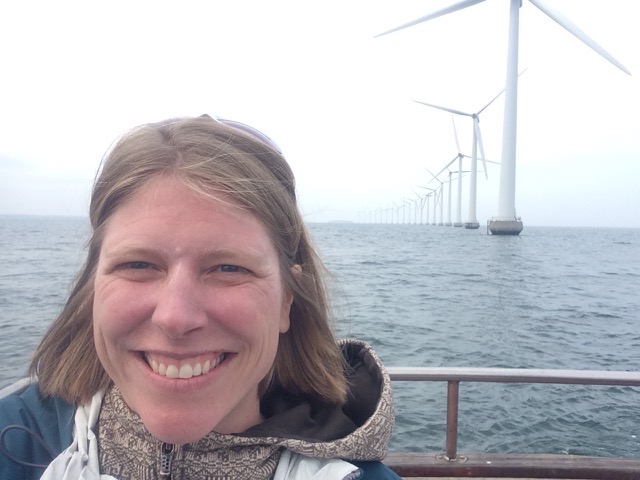
What brought you to NREL?
NREL wind publications were a primary source in my studies. I had long followed the work and knew of the lab, so it was an honor to join the team.
What’s your favorite part about your current role?
The people are my absolute favorite part of my job. The project management team is full of kind, compassionate, and dedicated professionals who also make me laugh. All the National Wind Technology Center and associated wind energy-related researchers and staff are dedicated and passionate. I appreciate their commitment.
You also do some research here. Can you tell us a little bit about that? How did you choose your area of research?
Last year, I spent a small bit of my time working on the potential impacts of noise related to the installation of offshore fixed foundations. This year, I will work on a project involving the interaction of marine mammals and offshore wind turbines. I really enjoy opportunities to do a little bit of research associated to what I worked on over the past 15 years in both academia and in the Navy. My childhood passion was marine mammals, and continuing to do work in this area reconnects me to that interest.
What are you looking forward to most in the next fiscal year for NREL’s wind energy program?
I’m excited to continue integrating our program’s teams and increasing efficiencies so we can really focus on the research. It is helpful to now have been here for over an entire yearly cycle and have a better understanding of the processes.
What have you been enjoying outside of work?
My happy place is spending time in nature with my son—hiking, climbing, skiing, cycling, kayaking. Yoga is also a daily part of my life. My practice keeps me balanced, and I love to share it with others through teaching.
On the Radar: Project Updates
NREL Team Awarded $1 Million To Study Bat Behavior Around Wind Turbines
NREL’s ecological proposal team—led by Jeffrey Clerc, Samantha Rooney, and Laura Dempsey—was selected by the U.S. Department of Energy’s (DOE’s) Wind Energy Technologies Office (WETO) to receive $1 million in funding to research bat behavior around wind turbines. Turbines may be catching bats’ eyes, but this team will investigate how, when, and why they may be attracted to various components of a turbine. The project, titled Using Sensory Modalities and Behavioral Context To Design Deterrent Systems for Bats, will take place over four field seasons with a focus on hoary bats. The results could help steer development of deterrent technologies that could improve the coexistence of wind turbines with bats, mitigating the risks that wind power projects can pose on wildlife.
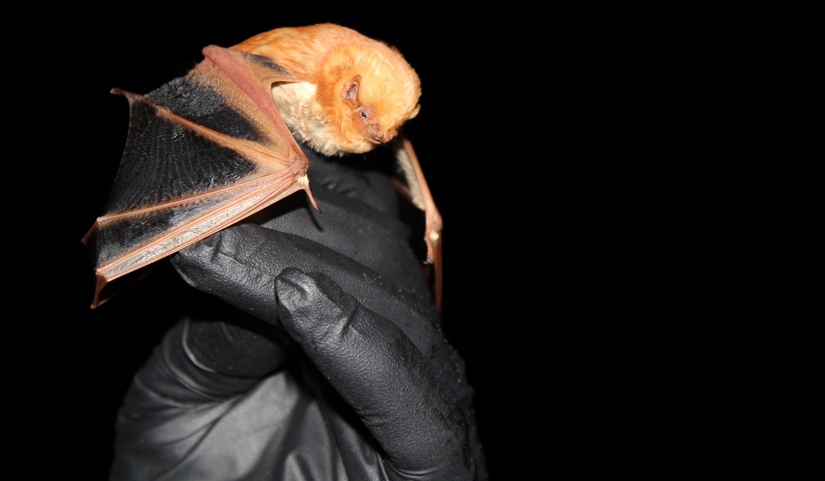
Downwind: In Case You Missed It
Renewed Funding Supports Wind Turbine Blade Innovations at NREL
A new round of funding from the Institute for Advanced Composites Manufacturing Innovation (IACMI) will support NREL researchers as they work to boost efficiency and cost-effectiveness in turbine blade manufacturing. Over the next 5 years, NREL will receive $4.1 million to oversee the wind energy technology area of IACMI, which is focused on identifying innovative composite materials—ideally materials that can be recycled at the end of the turbine’s lifespan—and streamlining the manufacturing process of wind turbine blades. This is the second round of funding distributed to IACMI’s members, building on an initial $70 million that was awarded in 2015.
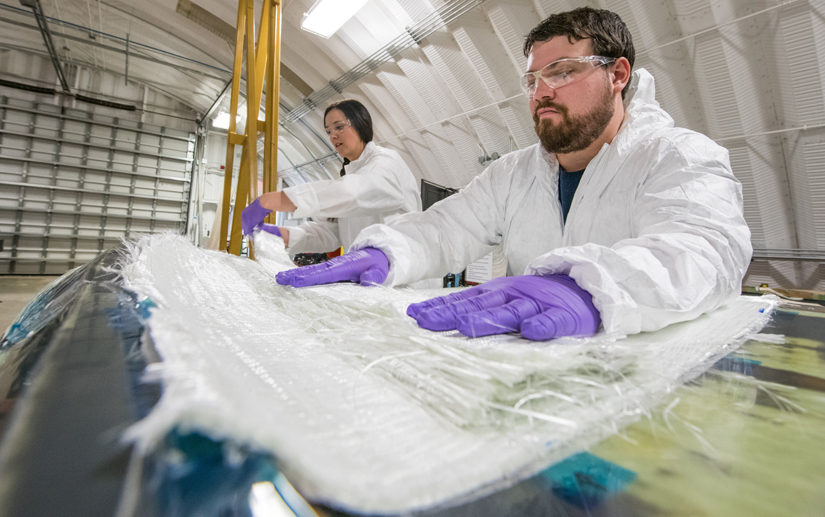
Researchers Robynne Murray and David Barnes work together to craft a turbine blade using innovative composite materials at NREL’s Composites Manufacturing Education and Technology Facility. Photo by Dennis Schroeder, NREL
Energy Experts Light a Path to Cross-Cutting Wind, Solar, and Hydrogen Collaboration
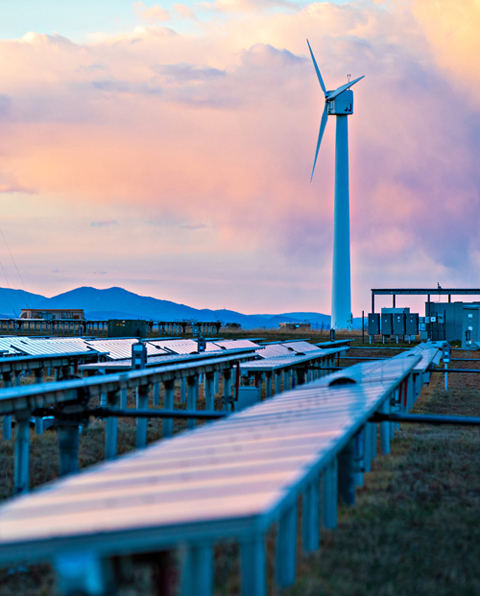
The transition to clean energy requires a combination of multiple energy sources, including solar, wind, and hydrogen power. More than 75 international experts gathered at the International Energy Agency Wind Collaboration Programme Topical Expert Meeting #106 to discuss how these technologies can achieve this integration. Photo by Werner Slocum, NREL
Over 75 wind, solar, and hydrogen power experts from around the world gathered recently for the International Energy Agency Wind Collaboration Programme (IEA Wind) Topical Expert Meeting #106. Organized by NREL researcher Genevieve Starke with support from NREL’s laboratory program manager Brian Smith and project managers Alexsandra Lemke and Betsy Sara, the 2-day hybrid event convened participants from government, industry, academia, and DOE’s national labs to discuss the integration of these three technologies in support of a carbon-free power grid and economy. Through plenary sessions, breakout sessions, and group discussions, the IEA Wind meeting identified several needs and collaboration opportunities, including gap analysis, standardization, development of use cases for renewable hydrogen systems, and best practices for sharing data, information, and resources across technologies and countries. These opportunities will inform future research and development to maximize the joint potential of these three technologies in the clean energy transition.
New Guide Helps Communities Harness the Benefits of Wind Energy
Authored by researchers at NREL, the Wind Energy Community Benefits Guide was recently published on WETO’s WINDExchange platform. The guide aims to help wind energy communities understand ways to expand the local value of wind energy development by providing samples of existing agreements and additional resources.
Annual Report Highlights International Wind Energy Efforts
IEA Wind recently released an executive summary of its 2022 annual report. Chapters from the report highlight research tasks and provide an extensive summary of how each of the 24 member countries benefit from wind energy, how much wind power generation each country has deployed, and how policies and research programs will increase wind power’s contribution to the world energy supply. Check out the U.S. chapter of the report, which NREL researchers helped develop.
Upcoming Events, News Mentions, Recent Publications
Upcoming Events
Join NREL and WETO researchers at upcoming events, including:
NAWEA/WindTech 2023 Conference
Oct. 30–Nov. 1, 2023, Denver, Colorado
Congressman Joe Neguse’s keynote speech kicked off this event with additional welcomes from Peter Green, NREL’s deputy laboratory director of science and technology and chief research officer; Bill Mahone, former director of Research Applications Laboratory at the National Center for Atmospheric Research; and Eric Lantz, WETO’s new director and a former NRELian. The 3-day conference features presentations and posters in more than 20 scientific tracks; plenary speakers on the short-, mid-, and long-term challenges of wind energy; and follow-up workshops, meetings, and a Graduate Student Symposium.
National Offshore Wind R&D Symposium
Dec. 4–5, 2023, Brooklyn, New York, and Online
Hosted by the National Offshore Wind Research and Development Consortium, this 2-day, hybrid conference will take a deep dive into offshore wind energy innovation.
Competitiveness Improvement Project 2023 Informational Workshop
Nov. 28–30, 2023, 12–2:30 p.m. MT each day, Online
NREL manages the Competitiveness Improvement Project (CIP) on behalf of WETO. Distributed wind energy technology suppliers interested in applying to CIP solicitations in 2024 are invited to register to attend this 3-day, virtual informational workshop. Speakers will provide an overview of the CIP process, topic areas, evaluation criteria, certification and testing requirements, and technical support opportunities.
NREL in the News
Floating Wind on U.S. West Coast Needs $35 Billion in Port Upgrades—Report, Ros Davidson, WindPower Monthly, Sept. 29, 2023
North Carolina Partners With Mid-Atlantic States and National Renewable Energy Laboratory To Assess Offshore Wind Workforce and Supply Chain Opportunities and Needs, David Rhoades, North Carolina Department of Commerce, Oct. 3. 2023
University of Delaware To Receive Nearly $3 Million in Federal Energy Innovation Funding, Cape Gazette, Oct. 8, 2023
Here’s How U.S. Offshore Wind Could Play Out by 2050, Michelle Lewis, Electrek, Oct. 9, 2023
Wind Power Will Expand With Larger Turbines but Could Face Pushback, John Fialka, E&E News, Oct. 10, 2023
Offshore Wind Could Generate 8% of USA’s Electricity by 2050: NREL, Saur News Bureau, Saur Energy International, Oct. 17, 2023
Recent Publications
Analysis
Advanced Wind Turbine Control Development Using Field Test Analysis for Generator Overspeed Mitigation, Wind Energy (2023)
Estimating National-Scale Wind Potential Using Spatially Explicit Turbine Layout Optimization, NREL Technical Report (2023)
Opportunities for Green Hydrogen Production With Land-Based Wind in the United States, Energy Conversion and Management (2023)
Technology
Definition of the Stiesdal Offshore TetraSpar Floating Wind System for OC6 Phase IV, NREL Technical Report (2023)
Enabling Control Co-Design of the Next Generation of Wind Power Plants, Wind Energy Science (2023)
Coordinated Wind Power Plant and Battery Control for Active Power Services, Journal of Renewable and Sustainable Energy (2023)
Gravo-Aeroelastically-Scaled Demonstrator Field Tests To Represent Blade Response of a Flexible Extreme-Scale Downwind Turbine, Renewable Energy (2023)
Guest Editorial: Control Interactions in Power Electronic Converter Dominated Power Systems, International Journal of Electrical Power and Energy Systems (2023)
Want More?
Subscribe to The Leading Edge newsletter, and explore the latest news and accomplishments in wind energy at NREL.
Share
